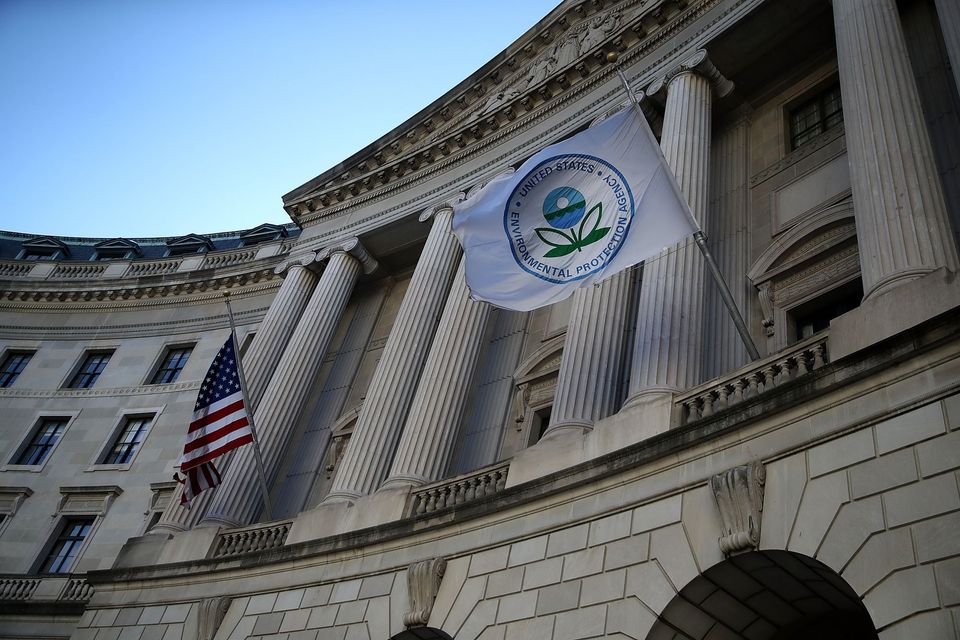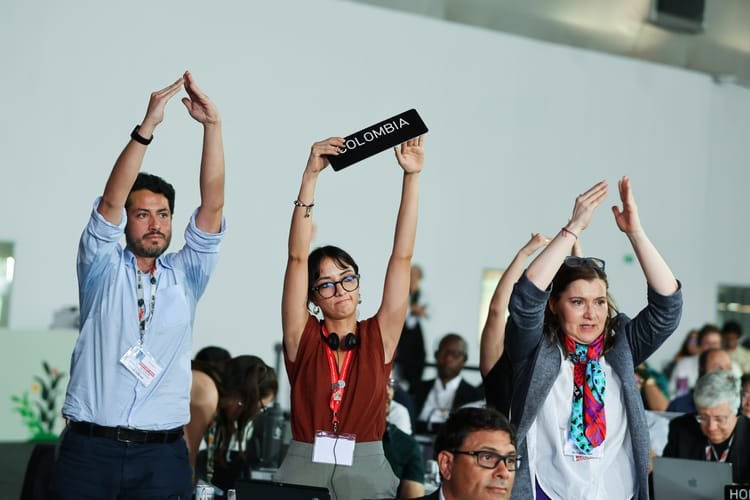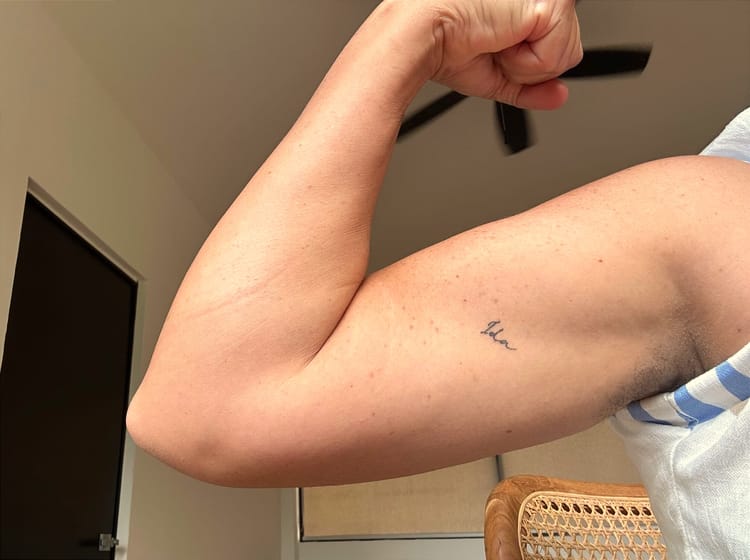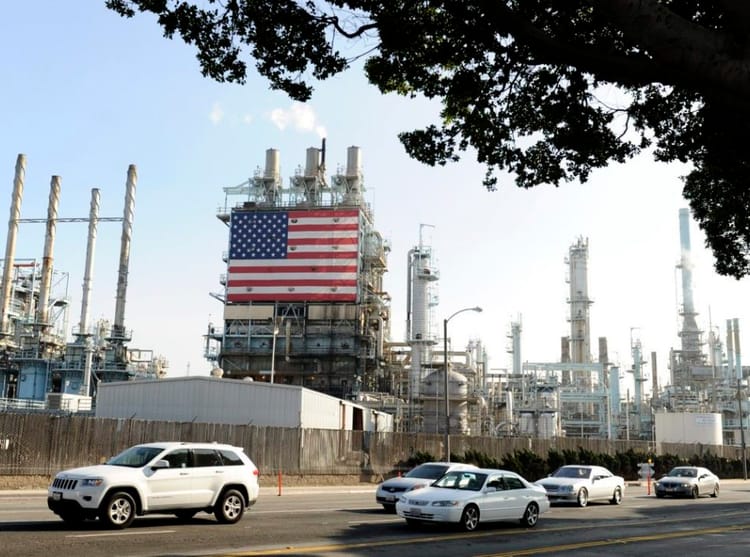Damages: Hansen, Heede, and More File Petition Asking EPA to Regulate Greenhouse Gases Under TSCA

As we wait to hear whether the Supreme Court will toss West Virginia v EPA altogether or apply the major questions doctrine to broadly rule against the EPA regulating greenhouse gases, period, a group of climate scientists and advocates are filing a petition this morning demanding that the EPA regulate greenhouse gas emissions—not under the Clean Air Act, the legislation in question in West Virginia v EPA, but under a law no one has yet applied to climate change, the Toxic Substances Control Act.
In this bonus podcast episode, we hear about this novel approach from petitioners Donn Viviani, a former EPA scientist who was at the agency for 35 years, and Dr. James Hansen, as well as Dan Galpern, the lawyer representing the petitioners.
Transcript
Donn Viviani: EPA is well aware of all of these things and they're worried about it. And all the staff is, is running around wishing that they could do something. The problem is they felt that they didn't have the authority, uh, and that none of the laws gave em the authority. In fact, the authority has been hiding in plain sight the entire time, under the toxic substances act, but there was sort of a perceived wisdom that the Toxic Substances Control Act didn't work based on how the agency got hammered over asbestos. And it was actually the agency's fault because they didn't do their due diligence, but they thought they had a slam dunk there. It didn't work. They kind of threw up their hands and said we have to work under the Clean Air Act, which is in abysmal law.
[00:00:39] Amy Westervelt: Welcome back to Drilled. I'm Amy Westervelt. A lot of climate folks are on pins and needles at the moment, waiting for the Supreme court to rule in West Virginia versus EPA. That case questions, whether the EPA has the authority to regulate greenhouse gas emissions from power plants, particularly beyond the immediate area of the plants themselves, folks are worried.
The court might come down with a broad ruling that severely limits the agency's ability to regulate greenhouse gases period. The other end of the spectrum is entirely possible to the case argues about a problem that no longer exists, the clean power plan. Historically when the court is asked to rule on something that has become a moot point over the course of litigation, they opt not to rule in this case.
It's unclear which direction though. While we wait to see what will happen there. It's important to remember a couple of things. First West Virginia vs. EPA deals specifically with the clean air act. Historically the clean air act is the law. That's been invoked in various efforts to deal with greenhouse gases.
And for obvious reasons, if you're trying to regulate something that's released into the air, it makes sense to invoke the law meant to protect the air. But first of all, the EPA absolutely can continue to regulate particulate matter. Under the clean air act, that's a type of air pollution that's produced by the same activity that produces greenhouse gas emissions, the combustion of fossil fuels.
And secondly, the clean air act is not the only law that's relevant here in the intro there you heard former EPA scientist, Don Viviani speaking at a press conference earlier this month.
[00:02:28] Donn Viviani: I was actually director of climate policy, uh, assessment division for, uh, for a while in the nineties.
[00:02:33] Amy Westervelt: Viviani says climate advocates have been sleeping on a law that might actually be better suited than the clean air act to deal with climate change, the toxic substances control act or TSCA
[00:02:47] Donn Viviani: This sort of problem is exactly the thing TSCA was designed for. Congress knew that there were, there were problems out there that were multimedia. Multi-program that a single, a single media. Couldn't handle and that we needed something more expansive. It was designed to take care of things that the other laws weren't properly taking care of. And if you look back at the history of climate, it's quite clear that none of the other laws are taking care of this.
So this is exactly what TSCA is designed to do actually.
[00:03:19] Amy Westervelt: Viviani has signed onto a petition being filed with the EPA today, requesting that the agency regulate greenhouse gas emissions under tasks. Other petitioners include climate scientists, Dr. James Hanson and climate accountability expert Richard Heede, who authored the famed carbon majors report, which pinpointed the 70 companies most responsible for climate change. The petitioners are asking that the EPA acknowledged the risk posed by greenhouse gases and commence rulemaking to deal with.The TSCA has historically applied to chemicals and materials Viviani notes that it has actually been used to regulate gases in the past as well.
[00:04:02] Donn Viviani: TSCA actually was used in 1978 for just this purpose, with respect to CFCs on the ground. In the rule that CFCs were endangering the ozone layer and presented a serious risk with respect to global warming.
CFCs are also a gas and therefore, you know, there actually is strong precedent in EPA's own actions and utilizing this statute to kickstart in effort to get rid of that potent pollutant that has very strong greenhouse gas forcing effective.
[00:04:48] Amy Westervelt: It also has the benefit of clear language that was strengthened as recently as 2016 by a bi-partisan effort.
[00:04:56] Donn Viviani: They just reauthorized the, the act in, in, uh, in 2016 was it was a, bi-partisan a reauthorization. So clearly this is the language that the TSCA is supposed to deal with unreasonable risk is recent and it was a bipartisan. Uh, it was a bipartisan passage
[00:05:18] Amy Westervelt: Dr. James Hansen says he hopes this effort will give the agency the boost it needs to act before it's too late.
[00:05:25] James Hansen: We're so far off and that just hasn't, it hasn't sunk in. And, you know, even though we have a international organization, the. Framework convention on climate change and the conferences of the parties. Some of the stuff that they're coming out with is, is pretty nonsensical. The, uh, the last cop, the, the head said, well, we've kept within the possibility to stay under 1.5 degrees warming.
That's absolute bullshit. Uh, w there's too much inertia in the energy system, uh, and in the, the warming that's in the pipeline, just because this planet is now out of balance by an enormous amount, uh, it doesn't sound like much, a little more than a one watt per meter squared, but that contains more than one degree Celsius, additional.
And we're already at 1.2. So, uh, yeah, we've, we've, uh, passed the point of being dangerous, but we can still deal with the situation. If we begin to make, uh, fossil fuels pay their costs, just. And, and, and do that in a, uh, in a way which can be made global and the United States should be the leader. We are by far the most responsible for the situation we're in both on an absolute basis and even more so on a per capita basis.
And we're were derelict in not, uh, Uh, not fascinating up to that responsibility and, and the government is not doing that now, even though they claim, oh, we're going to reduce emission 50%. Well, that's you, you've got to do it in a way that can be made global. And we have to recognize our global responsibility and we're not doing that.
[00:07:49] Amy Westervelt: In today's episode, we're going to delve into this novel approach to regulating greenhouse gas emissions. After the break, I'll be joined by attorney Dan Galpern, executive director and general counsel of the climate protection and restoration initiative. He's representing the petitioner.
He'll walk us through the argument here and why he thinks it just might work. Stay with us.
[00:08:12] Amy: So I'm hoping that you can start with an explanation of why TSCA is so well suited to dealing with greenhouse gas emissions and the decision to kind of avoid the Clean Air Act in this petition.
[00:08:28] Dan: Certainly, well, TSCA is well situated to serve as a foundational statute for a wide ranging decarbonization effort in the United States because of its very strong language. And because we have gone so far beyond the level of safe atmospheric CO2 and the other greenhouse gas emissions. And so what is needed now is not merely a tinkering at the edges, but, restrictions to the point of prohibition, to the point of a phase-out actually of a greenhouse gas emissions sources, at least the major ones, because as the administration itself has recognized, we need not only to get to net zero in terms of CO2 and other GHG emissions, but we have to get to net negative and we have to do that as soon as possible, and certainly soon after the mid century point. So what we're trying to provide is a firm legal foundation under which these types of actions can proceed and to avoid the recurrent and protracted deadlock in Congress over any need for any new legislation? No new legislation is needed here. Congress acted strongly in passing the Toxic Substances Control Act. And in amending it just six years ago in 2016.
[00:10:14] Amy: Right. And can you talk about how some of the improvements to TSCA helped to strengthen this petition? What were those changes in 2016 and how did they come into play?
[00:10:28] Dan: Right. Well, let's first talk about the threshold determination that needs to be made by EPA when considering any specific chemical substances or mixtures. We are proceeding here under section 21 of the Toxic Substances Control Act, the citizens provision , and it allows citizens to request that the agency commence a rulemaking, in order to deal with chemical substances or mixtures that present a risk of injury to health or the environment. And we certainly have that here overwhelmingly with respect to the climate crisis. And so the threshold discrimination EPA needs to make is just that do greenhouse gas emissions and their major sources. Do they present a risk of injury to health or the environment or not? When they make that determination, then that commences a rulemaking. And so they need to make that determination within 90 days of our filing of this petition. And then the rulemaking will take as long as it's necessary and it could be several different rulemakings, but Congress specified a set of requirements that need to be imposed by the agency until the point that the chemical substances and mixtures no longer present the risk of injury to health and the environment.
So that's the threshold determination. And that is specifically what we're seeking in this petition now where we lay out a little bit in the petition, what we think a adequate rule would look like, but, with respect to the legal impact of this petition, it is simply asking for EPA's initial determination, we would then participate in the rulemaking process as would perhaps a number of other people, to attempt to ensure the strongest and most adequate rule to address this crisis.
[00:12:45] Amy: Right. Can you walk me through, How this intersects with what may or may not come out from the Supreme court this month on West Virginia versus EPA. And what sorts of legal challenges you expect to see?
[00:13:02] Dan: Certainly, well, first of all, A rulemaking under TSCA does not mean that other authorities should not continue to be utilized. And in fact, the petition strongly recommends continuing to utilize the Clean Air Act and other authorities that make sense. There is a challenge as you noted right now before the Supreme court in West Virginia versus environmental protection agency. We are talking on June 15. Anticipate that decision any day and certainly by the first few days of July, that deals specifically with section 111 D of the Clean Air Act. 111 D of the clean air act has nothing to do with our petition under the toxic substances control. 111D of the clean air act confers authority on EPA to compel emissions controls from existing power plants.
And there is a specific question as to whether the Obama EPA in fashioning the now dormant, clean power plan overstepped its bounds and read into provision of law authority to restrict emissions outside the fence line of power plants, rather than just inside the fence line of power plants.
So that's a specific, fairly narrow technical issue. Those including West Virginia and a number of other conservative states and a portion of the fossil fuel industry are urging the Supreme court in that case to rule much more broadly to say that without express language in the statute, no federal agency can really do much to restrict economic activity at the center of industrial policy, within a sector of the economy. And so they're seeking to have a very broad prohibition against not only the EPA, but other agencies attempts to restrict activity that even where it presents a significant risk to human health or the environment.
But you know, it's very unclear to me whether the Supreme court will take up that invitation. I'm not saying it's impossible, we will see, but the language at issue in section 111. I think, while EPA did construe it correctly is far more vague or ambiguous than the language that we're relying on under the Toxic Substances Control Act in our petition.
All that is to say, therefore that I think that even if the Supreme court rules very broadly in West Virginia versus EPA, the legal basis for our petition under the Toxic Substances Control Act should be unaffected.
[00:16:31] Amy: Right. Right. And, what are some of the potential outcomes here?
[00:16:36] Dan: Okay, well, let me first talk about what needs to happen why this works. As Dr. Hansen, and other Climate scientists have established, and I know Dr. Hansen because he's one of the co petitioners of this, of this petition they have established that we, as I indicated before, have already gone well into the danger zone with respect to the atmospheric concentration of greenhouse gas gases, including, carbon dioxide and CO2 and methane C H four and the halogenated fluorocarbons and so on.
And what that means then, especially in light of the long atmospheric residency time of carbon dioxide, we need not only to phase out emissions. But we also need to remove a substantial portion of the so-called legacy emissions. The emissions that remain in the air from past industrial and economic activity. Exxon's emissions from 1920 or emissions deriving from the sale of their product, gasoline, oil, a substantial share of that remains in the atmosphere for millennia. And there continues to heat the planet, unless it is, unless we work to accelerate its removal. Nature will remove it, but over hundreds of thousands of years, to millions of years, we can't wait that long.
So then corresponding to the problem that we confront this petition seeks a phase out of emissions. Again, of course, within reach of US law. This is a global problem. And, we hope that the United States in setting a good example will strengthen international institutions that are attempting to address this problem globally.
And there's good reason that that would work, to both phase out emissions within reach of US law and to ensure removal of the overburden of the surfeit of atmospheric CO2 that human activity is responsible for. And so the first is accomplished by imposing restrictions and to ensure a substantial phase out of continuing or new greenhouse gas emissions. And the second would be accomplished pursuant to rule making. The fossil fuel industry, which is the major source of greenhouse gas emissions in the United States and in most other nations would be required to either remove or to pay for the removal of a substantial share of its emissions. We recognize that it would probably untenable to compel the fossil fuel industry to remove all of its emissions from time immemorial. And so in effect there's a burden share presumption in the petition. So industry, we would be responsible for 50% of their legacy emissions since 1992. That is the date of the signing of the United nations framework convention on climate change and its ratification in the United States Senate, because that's the point at which there is absolutely no reasonable doubt that the industry was on full notice that their activity was creating a untenable situation for the planet and that everyone was obliged to do something about it, at least arguably. So, I think it's a very reasonable, perhaps even generous, compromise, in the law where a person or a company substantially contributes to a problem that leads to the death or injury of people. The basic principle is joint and several liability, so that, the entirety of the problem that one can be held responsible for the entirety of the problem where you have substantially contributed and then you would seek contribution from, uh co-defendants. Uh, but here we're seeking to. Portion of responsibility, uh, in this way, so that they would be responsible for 50% of their emissions only since 1992.
And then that obligation would grow with time so that soon after mid century, the industry would be responsible to remove all of the greenhouse gas emissions that resultfrom t he use as intended of their product burning coal oil and gas. So those are the two sets of responsibilities that petitioners have in mind, that would be the outcome of a rulemaking it's consistent with the prescription in the three major studies that were produced this last year by the intergovernmental panel on climate change and the overwhelming consensus of the relevant scientific community that we need both to phase out emissions worldwide, and we need to remove a substantial share of the overburden greenhouse gas emissions that are long resident in the atmosphere and in the ocean.
So we need to essentially clean up the mess and the major industry bears a substantial share of the burden to get that done.
[00:22:44] Amy: Got it. Okay. Can you walk through some of the potential outcomes here. I know you're expecting legal challenges. What might those be?
[00:22:55] Dan: Well, this is a industry, the fossil fuel industry, the predominant source of greenhouse gas emissions in this country that is used to getting its way. On the other hand, there have been a series of successful regulatory programs that have limited the industry's unfettered, right to treat the atmosphere as an open sewer, and, it has adjusted well and we believe that it would adjust well to this type of regulation that is to say the industry would be transformed into an energy energy industry.
Just last week, the United Nations general secretary called for the phase out of fossil fuels worldwide. They don't, they don't have to go to court and challenge this, they could participate in good faith in the rule-making process. And we come up with a reasonable pathway to get from a disaster to safety . In the alternative they could challenge, EPA's decision. It would, I think be legal insanity for them to argue that greenhouse gas emissions do not present a risk of injury to health or the environment.
I think that they would certainly lose on that. We are prepared to go to court. To defend a favorable agency determination. And we will do what's necessary, you know, going from one end of this country to another to galvanize the public, to ensure that the administration has the political support it needs to do what is right here.
And that is to take strong action to preserve our nation from the continuing threat of devastating climate change. It's within reach because of this petition and pointing out, you know, this strong tool that has been hiding in plain view. It's a tool that therefore should be used to address what the president has called an existential risk, an existential threat. So, yeah, there's possibility, there will be opposition. There's also the possibility that there will be cooperation and we will, join together to fashion a reasonable and timely rule to protect our.
[00:25:35] Amy: Is there some sense too, that, under TSCA multiple other sources of greenhouse gas emissions can be regulated, you know, beyond the power plants too.
[00:25:47] Dan: The ordering is really a question of priorities and what's most important to be done. What's the most difficult to be done. The toxic substance control act provides significant authority to the agency to do what's necessary to protect the public and, and the environment from chemical substances and mixtures that represent an overwhelming threat. And so there are diffuse sources including in agriculture, concentrated animal feeding operations, there's a significant amount of methane that is produced there as well as CO2, and the agency would need to decide on priorities and on the ordering, and I anticipate that it would be seeking to control, restrict the major sources of emissions first, which includes coal oil and gas production and also importation, and use and disposal. I mean, we dispose of the greenhouse gas emissions from the burning of coal oil and gas right now, predominantly by just releasing it into the atmosphere as if the atmosphere is a free and open. And that needs to be phased out as rapidly as possible. But yes, the statute does provide a strong tool to the agency to address the gamut of problems arising from the production of these chemical substances and mixtures, the greenhouse gas emissions and their major sources.
[00:27:44] Amy: Right. I think that we covered everything, but is there anything that we didn't talk about that, that you think is important for people to know or to understand about this petition?
[00:28:00] Dan: One of the things I would like to say, however, is that this petition also serves as something of an antidote to despair that increasingly infects a public that is knowledgeable about the scope and the severity of the crisis that we confront.
(music)
That's it for this week. You can read or endorse the petition and track its progress here. We'll bring you an update when the EPA makes a decision too.
Before you exit out of your podcast app, if you could just take a moment to rate or review the podcast, I'd really appreciate it. It helps the show reach more listeners. Thanks for that. And thanks for listening, and we'll see you next time.
Drilled is an original production of the critical frequency podcast network. Our producer is Jules Bradley. Our editor is Jude Joffe-Bloch. Mixing, sound design, and scoring by Peter Duff. And I'm your host and creator Amy Westervelt.
If you would like to get bonus content ad-free episodes and access to exclusive merchandise, please check out our Patrion at patrion.com/drilled. You can also sign up for our newsletter@drilledpodcast.com and you can follow us on Twitter at we are drilled.





